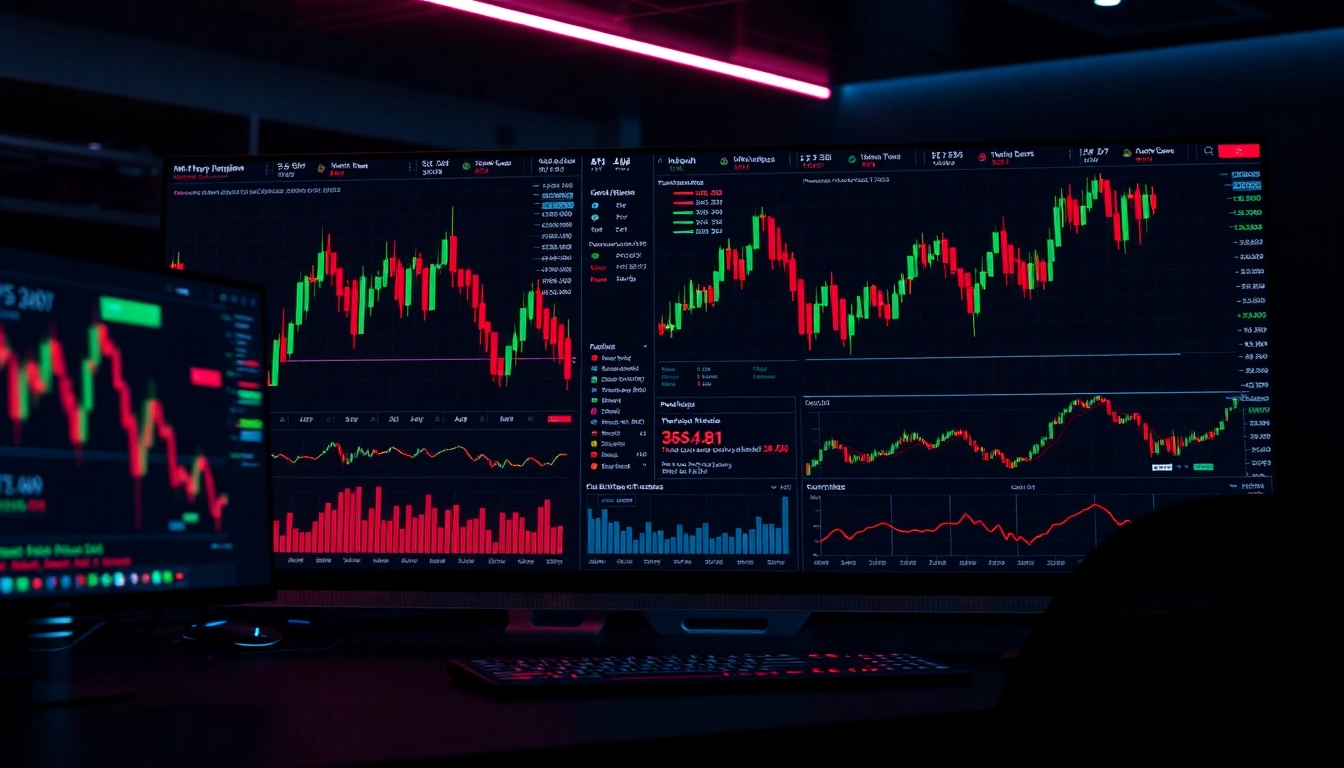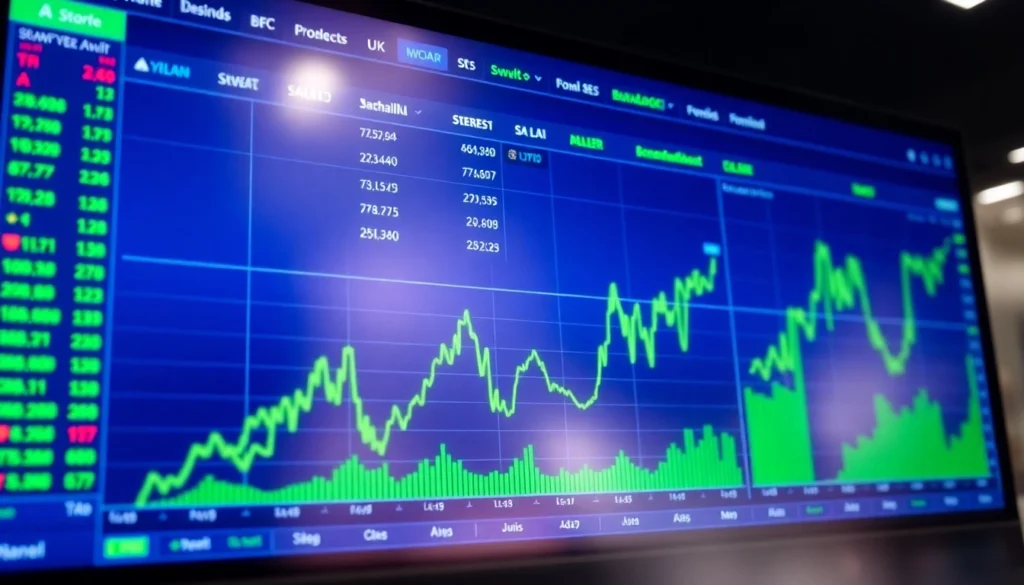Introduction to Trading View and Its Features
In the fast-paced world of financial markets, having access to reliable, comprehensive, and up-to-date analysis tools is crucial for traders and investors. One platform that has surged in popularity over recent years is trading view. This platform is renowned for its advanced charting capabilities, social trading features, and a broad array of tools that cater to both novice and professional traders alike. Whether you’re analyzing forex, stocks, cryptocurrencies, or commodities, Trading View offers an integrated environment to track, analyze, and execute trading strategies effectively.
Founded with the goal of democratizing market analysis, Trading View combines real-time data access with powerful visualization tools and a vibrant community. Its versatility enables users to customize their workspace, develop technical indicators, and create automated alerts, making it a cornerstone in the modern trader’s toolkit. In this guide, we will explore its core features, advanced techniques, strategic applications, and best practices to maximize your market insights and trading success with Trading View.
Understanding the Core Tools and Functionalities
Charting Tools and Technical Analysis
At the heart of Trading View is its charting platform, which supports a myriad of chart types such as candlestick, line, bar, and Heikin-Ashi charts. Users can overlay numerous technical indicators like Moving Averages, RSI, MACD, Bollinger Bands, and more than a hundred others. The intuitive drag-and-drop interface allows traders to draw trendlines, channels, Fibonacci retracements, and geometric patterns to recognize market structures effectively.
Market Data and Multi-Asset Coverage
Trading View offers real-time data for an extensive range of markets including stocks, forex, cryptocurrencies, commodities, and indices. Its global reach ensures traders can analyze international markets seamlessly. For example, you can monitor the S&P 500 Index, Bitcoin’s price, or forex pairs like EUR/USD, all within a unified platform, enabling diversified analysis without switching tools.
Social and Community Features
Beyond charting, Trading View fosters a social environment where traders share ideas, strategies, and insights through a dedicated community space. Users can publish their analysis, comment on others’ ideas, and follow leading traders—providing collaborative learning and diverse perspectives that enhance market understanding.
Advanced Trading View Techniques for Traders
Using Indicators and Overlays Effectively
Mastering technical analysis with indicators requires understanding their strengths and limitations. Combining multiple indicators—such as using RSI to identify oversold conditions alongside trend-following Moving Averages—can improve entry and exit signals. Trading View’s custom scripting language, Pine Script, allows traders to develop and backtest personalized indicators tailored to specific strategies.
Implementing Automated Alerts and Signals
One of the significant advantages of Trading View is its ability to generate real-time alerts. Traders can set alerts based on price levels, indicator crossovers, or custom conditions. For example, receiving an alert when Bitcoin crosses above its 50-day moving average can prompt timely trading decisions. These alerts can be delivered via email, SMS, or within the platform, ensuring traders never miss crucial moments.
Integrating Trading View with Other Tools
Trading View integrates smoothly with popular brokerage platforms and trading APIs, enabling automated order execution. By linking with brokers like OANDA, FXCM, or others supporting Trading View integrations, traders can execute trades directly from their analysis environment. Additionally, Trading View’s API allows the use of third-party tools for more sophisticated analytics and algorithmic trading setups.
Strategies to Maximize Market Insights with Trading View
Analyzing Multiple Markets Simultaneously
Using Trading View’s multi-chart layout, traders can analyze several markets or instruments side by side. This approach helps identify correlations, divergences, or macroeconomic trends influencing multiple assets. For instance, monitoring equity indices, forex pairs, and commodities simultaneously provides a holistic view of market sentiment, aiding in more informed decision-making.
Developing Probabilistic Trading Models
Incorporating probabilistic models involves analyzing historical data and statistical patterns to estimate the likelihood of certain market movements. Traders can backtest strategies within Trading View using historical charts and insights, refining their approach over time. Combining probabilistic analysis with technical signals increases the robustness of trading decisions, ultimately improving success rates.
Utilizing Community Ideas for Bias Reduction
Community ideas provide diverse viewpoints that can help counteract emotional biases or overconfidence. By reviewing multiple analyses and crowd-sourced predictions, traders can identify consensus or opposing signals, promoting a balanced perspective. Critical evaluation of community ideas coupled with personal analysis strengthens overall trading discipline.
Best Practices for Consistent Success on Trading View
Regularly Updating Your Analysis Workflow
Markets are dynamic, requiring traders to adapt their analysis methods constantly. Regularly revisiting and refining your chart setups, indicators, and alert conditions ensures your trading approach remains aligned with current market conditions. Incorporating a routine review process enhances consistency and reduces errors caused by outdated assumptions.
Learning from Trading View User Community
The Trading View community is a valuable resource for learning new techniques and gaining diverse perspectives. Engaging actively by studying shared ideas, participating in discussions, and following experts helps expand your analytical skills. Many successful traders share detailed case studies and tutorials that can accelerate your development.
Maintaining Emotional Discipline During Trading
Discipline remains the backbone of trading success. Using Trading View’s features like stop-loss and take-profit alerts can help automate emotional responses, reducing impulsive decisions during volatile market swings. Setting clear trade plans and sticking to predefined rules fosters mental resilience and long-term profitability.
Measuring Your Performance and Improving Results
Tracking Strategy Effectiveness Using Trading View Analytics
Trading View provides tools to backtest strategies and analyze trading performance over time. Metrics such as win rate, risk-reward ratio, and drawdown help traders evaluate and optimize their approaches. Continuous monitoring enables data-driven adjustments, ensuring ongoing improvement.
Adapting Techniques Based on Market Feedback
Market conditions evolve, and so should your strategies. Analyzing trade outcomes and revisiting your indicator setups or timeframes allows for calibration. For example, shifting from intraday to swing trading may be necessary when volatility patterns change, leveraging Trading View’s flexible environment for strategic adaptions.
Setting Realistic Goals and Benchmarks
Success in trading is a journey, not a destination. Establishing achievable profit targets, risk parameters, and performance benchmarks helps maintain motivation and discipline. Monitoring these metrics regularly ensures consistent progress and prevents overtrading or undue risk-taking.



